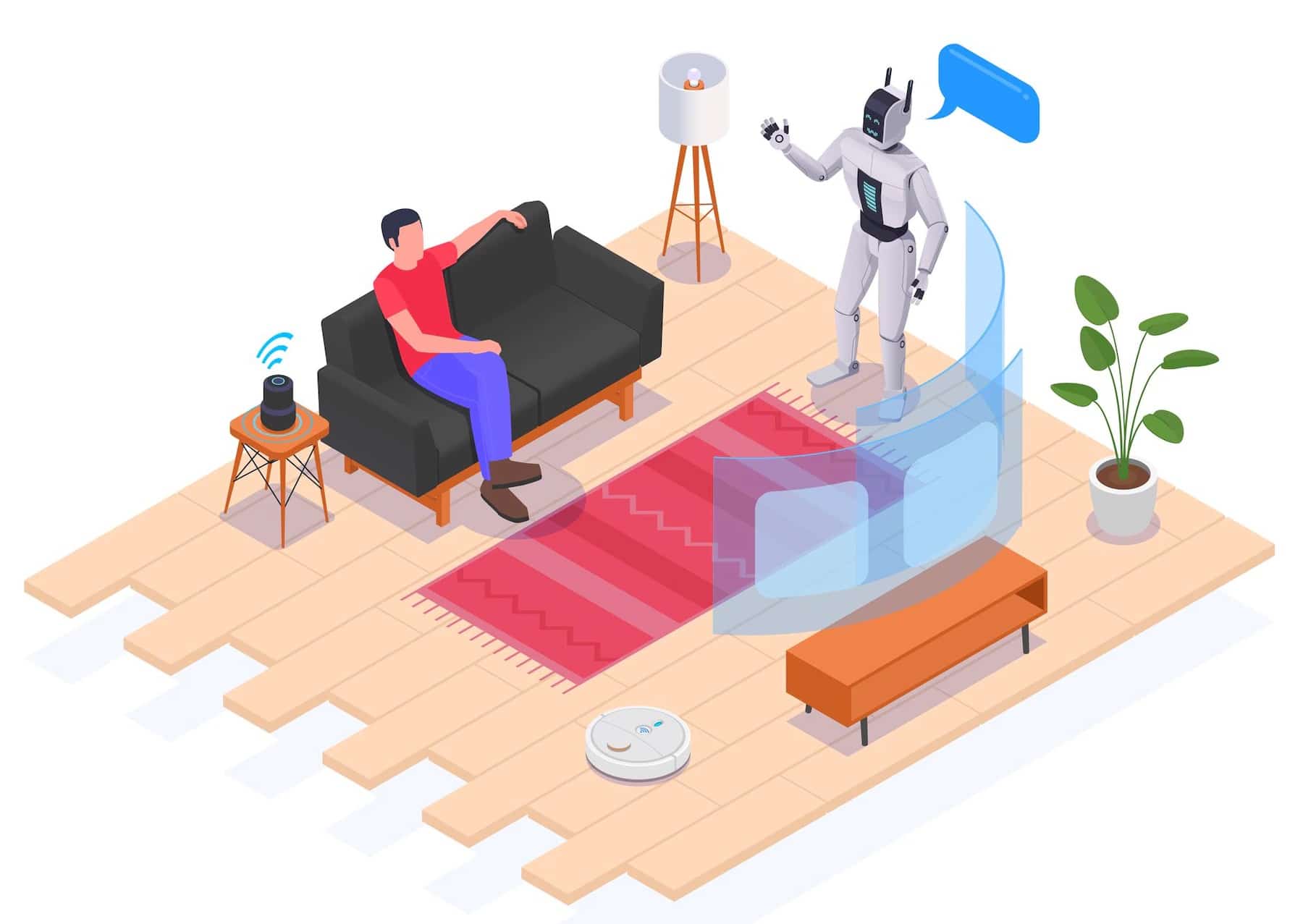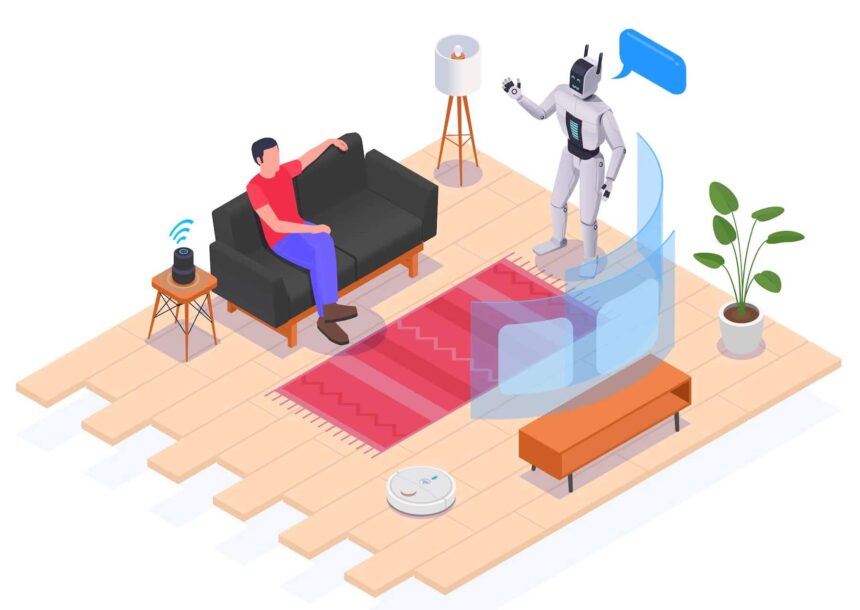
Introduction
Humans have always been fascinated by the idea of talking to machines. Science fiction movies have popularized this concept, and we are now seeing it become a reality with virtual personal assistants.
The three most popular virtual personal assistants are Siri (developed by Apple), Alexa (developed by Amazon), and Cortana (developed by Microsoft). All three of these assistants are available on mobile devices and computers.
In this article, we will compare Siri, Alexa, and Cortana’s features and capabilities to see which is the best virtual personal assistant.
Table of contents
Also Read: Automation vs AI: What is the Difference, Why is It Important?
What is a Virtual Assistant?
Before we compare the three virtual assistants, let us first define what a virtual assistant is. A digital assistant is a software program that can perform a variety of tasks or answer basic questions based on voice commands. Siri was the first version of what we now think of as a digital assistant.
Siri was initially introduced as an app for the iPhone 4s in 2011. Siri was then integrated into the iPhone 5 and later versions of the iPhone. Alexa was introduced in 2014 with the Amazon Echo and has since been integrated into other Amazon products like the Fire TV and Amazon Tap. Cortana was introduced in the same year with the release of Windows 10.
Virtual assistants were initially designed to perform simple tasks like setting alarms, placing phone calls, and adding items to a shopping list. However, they have since evolved to become much more powerful and can now perform complex tasks like booking travel reservations and ordering products.
They are also integrated nicely into modern homes and can be used to control smart devices like lights and thermostats.
Other applications
Virtual assistants don’t necessarily have to connect to your phone. While Apple, Amazon, and Microsoft are the three tech giants of the industry, there are infinite possibilities for other applications.
E-commerce websites have begun to develop virtual assistants to help with the shopping experience. Some examples include chatbots, which you might have encountered on certain websites.
These chatbots can help you with product recommendations, customer service, and even placing orders. Virtual assistants are also being developed for use in the medical field.
Healthcare professionals can now use virtual assistants to remind patients to take their medication and schedule doctor’s appointments. Some hospitals have even begun using virtual assistants to help with administrative tasks.
Also Read: Is it possible to make an AI like Cortana (From Halo)
Are Virtual Assistants AI-based?
So how is all of this possible? The technology that powers virtual assistants is called artificial intelligence (AI). AI is a broad term that refers to the ability of a computer to learn and perform tasks that would normally require human intelligence.
This ability includes basic tasks and more complex ones, like understanding natural language, recognizing patterns, and making decisions. The most popular type of AI is machine learning. Machine learning is a subset of AI that refers to the ability of a computer to learn from data.
Machine learning algorithms can improve automatically when given more data. This is in contrast to traditional programming, where a programmer has to write explicit rules for the computer to follow.
The best virtual assistants use machine learning algorithms to improve their performance constantly.
If that sounds like the plot of a science fiction movie, you’re not wrong. AI and machine learning are often used in sci-fi movies to create intelligent robots or computers. Virtual assistants are simply the first step in the development of AI-powered devices. While they are not as advanced as the robots in sci-fi movies, they are getting closer every day.
How do Virtual Assistants work?
Virtual assistants work by converting your spoken words into text using a process called speech recognition. Once the virtual assistant understands what you said, it will attempt to fulfill your request using a process called natural language processing.
This is where the virtual assistant tries to understand the meaning of your words and figure out what you want it to do. For example, asking Siri to call your mom will first convert your speech into text.
It will then use natural language processing to understand that you want it to complete its task. In this case, that’s placing a phone call to your mom. Since the assistant is “intelligent,” it will know to search your contacts for someone named “mom” and place the call.
If you ask Alexa to lower the temperature, it will again use voice recognition technology to convert your words into text. It will then use natural language processing to understand that you want it to lower the temperature on your thermostat. Through Bluetooth, it will connect to your thermostat and lower the temperature.
As you can see, more complex tasks require more steps for the virtual assistant to complete. So you can imagine how complex things get now that we have unveiled self-driving cars and other advanced AI-powered devices.
Comparing Siri, Alexa, and Cortana
If AI is integrating our lives for good, we might as well pick the right one to help us out. While all three of these virtual assistants are powered by AI, they each have their own unique features and capabilities.
Now that you understand how virtual assistants work, let’s take a more in-depth look at the three most popular ones: Siri, Alexa, and Cortana.
Voice accuracy and speed
The first factor to consider when comparing virtual assistants is voice accuracy and speed. This feature is crucial because you need to be able to understand what the assistant is saying in order to give it commands. Speed is also essential because you don’t want to wait long for the assistant to complete your request.
In general, all three assistants provide accurate responses and fast. However, there are some slight differences.
Due to its background in mobile phones, Siri is generally more accurate at understanding spoken commands than Alexa and Cortana. This is likely because mobile phones have had to deal with background noise for much longer than smart speakers.
It is also considered the fastest among the three, likely for the same reason. And since Apple is constantly improving Siri, its accuracy and speed are expected to continue to increase.
Alexa is not as accurate as Siri, but it is getting better. With the rise of echo devices, Amazon has been working hard to improve Alexa’s accuracy. Overall, Alexa is still a decent assistant. Cortana, unfortunately, comes last in this category. It does not have accurate responses like its competitors, making it challenging to calculate the real response times.
Features and capabilities
Next, let’s compare the features and capabilities of each assistant. Even though they are all powered by AI, they each have their own unique capabilities. The basic functions are the same throughout all three contenders. You can use all three of them to:
- Play music through third-party smart speakers
- Send text/voice messages
- Make phone calls
- Set alarms
- Check the weather
However, there are some unique capabilities that Siri, Alexa, and Cortana offer.
Siri
Siri is unique because it is the only one of the three that you can use on iPhones and other Apple devices. That gives Siri a few extra features and capabilities that Alexa and Cortana don’t have.
For example, since Siri is integrated with the iPhone’s operating system, you can use it to open apps, make system changes, and search your phone. You can also use Siri to control your smart home devices if they are connected to your iPhone because Siri can access HomeKit, Apple’s smart home platform.
As for web search queries, Siri uses Google’s robust search engine. So you can expect Siri to give you accurate results when you ask complicated questions about the weather, sports scores, or general knowledge.
One downside of Siri is that it only works with Apple products. So if you don’t have any Apple products, Siri won’t be able to help you. However, this can be seen as a plus since you have quicker access to staple apps like Apple Music and Apple Maps.
Alexa
Amazon Alexa has some neat features as well, which can be especially helpful for die-hard Amazon Prime members!
Since Amazon is the largest online retailer, it’s not surprising that you can use Alexa to order products from Amazon. You can also use Alexa to track your Amazon orders and get updates on their delivery status.
In addition, Alexa can connect to a variety of smart home devices. While Siri can only connect to devices compatible with Apple’s HomeKit platform, Alexa can connect to devices that use Amazon’s Echo platform, as well as other popular platforms like Wink and SmartThings. This gives you more options for controlling your smart home with Alexa.
Alexa also has a few features that Siri and Cortana don’t have. For example, you can use Alexa to play games, like Deal or No Deal and Jeopardy! And if you have an Amazon Fire TV, you and your family can use Alexa to control it with your human voices.
Cortana
As a Microsoft product, Cortana uses Bing as its search engine. And like Siri, Cortana can be used to make system changes on your computer. For example, you can use Cortana to change your computer’s settings, create new documents, and set reminders.
Cortana also has some features like tracking packages, finding restaurants, and getting movie showtimes.
Cortana also has a unique feature called “Briefing.” The briefing gives you a rundown of the day’s important emails, news, and calendar events. This is a handy feature if you want to know what’s happening in the world without opening up many different apps.
Ecosystem integration
Interconnectedness is crucial in the Internet of Things era, and you want to ensure that your virtual assistant can connect to all of your devices. Another crucial factor to consider when choosing a virtual assistant is ecosystem integration, which refers to how well the assistant works with other devices and apps.
Siri is only compatible with Apple products, so if you don’t have any Apple products, Siri won’t be able to help you. This is probably the only category where Siri falls short.
Some unofficial iOS and Android apps allow you to use Alexa on your phone, but the functionality is limited. Alexa, on the other hand, is compatible with a wide range of devices. In addition to Amazon products, Alexa can also connect to devices that use Amazon’s Echo platform.
As for Cortana, it is available on a variety of devices, including Windows phones, computers, and even some cars. You can also use Cortana on your Xbox One if you’re a gamer. However, it is much more complex to install than the pre-installed versions on other devices.
Integration also extends to third-party apps. For example, Siri can be used to hail an Uber or order a pizza from Dominoes. And Cortana can be used to track your packages from UPS and Federal Express.
When you ask to play music with smart speakers, both Siri and Alexa will default to their respective music streaming services. However, both voice assistants can also connect to other popular streaming services like Spotify and Pandora.
Smart Homes
The epitome of ecosystem integration is the smart home. With a properly connected smart home, you can control everything with your voice. We’re maybe not at the ‘Star Trek replicator’ level yet, but we’re getting there.
If you have a smart home, Siri and Alexa can both be used to control your devices. The setup process is painless and only takes a few minutes.
However, there are some devices that Siri can’t control. For example, if you have a Nest thermostat, you’ll need to use the Nest app to control it. The same is true for the Philips Hue lightbulbs.
Alexa, on the other hand, has a wider range of compatible smart home devices than Siri. Cortana comes dead last in this category. While Cortana can be used to control some smart home devices, the setup process is much more complicated than with Siri and Alexa.
You’ll need to log into a PC, provide your email and submit a verification code before you can even begin to use the app.
Also Read: Tools to Make AI Generated Art.
Summary Siri vs Alexa Vs Cortana
- Supported Devices:
- Alexa is primarily found on Amazon Echo devices but is also integrated into various third-party devices.
- Siri is built into Apple devices like the iPhone, iPad, Mac, Apple Watch, and Apple TV.
- Cortana is part of Microsoft’s Windows 10 and Xbox platforms but is also available as a standalone app for iOS and Android, although its presence on non-Microsoft platforms has been decreasing.
- Smart Home Integration:
- Alexa has broad support for a wide array of smart home devices.
- Siri, through Apple’s HomeKit, supports a more limited set of smart home devices, but with deep integration.
- Cortana has limited support for smart home devices compared to Alexa and Siri.
- Skills and Customization:
- Alexa has Skills, akin to apps, that allow users to add specific functionalities to their devices.
- Siri does not support the same level of customization, but it integrates deeply with Apple’s apps and services.
- Cortana’s third-party skills are more limited compared to Alexa but are similar to Siri’s integrations.
- Knowledge Base and Search:
- Alexa uses Bing as its default search engine.
- Siri uses Google for searches.
- Cortana, being a Microsoft product, also uses Bing.
- Privacy:
- Siri is designed with privacy features such as on-device processing for certain requests.
- Alexa and Cortana send more data to the cloud for processing, although they have privacy settings users can adjust.
- Ecosystem Integration:
- Siri integrates deeply with the Apple ecosystem.
- Alexa can be integrated with a wider range of ecosystems and is more flexible if you’re using a mix of devices.
- Cortana is primarily geared towards integration with Microsoft’s ecosystem, particularly with Office 365 and LinkedIn.
- Shopping:
- Alexa provides direct integration with Amazon’s shopping services.
- Siri and Cortana do not have similar shopping capabilities.
- Communication:
- Alexa can make calls and send messages between Alexa devices and offers a “Drop In” feature for intercom-style communication.
- Siri can send messages and make calls across Apple devices.
- Cortana supports messaging and calls but does not offer a feature equivalent to Alexa’s “Drop In.”
Google Assistant wins out for now
Google Assistant is a virtual assistant that was first introduced on the Google Pixel phone. It has since been made available on other Android phones, as well as the Google Home smart speaker.
Like Siri, Alexa, and Cortana, Google Assistant can be used to perform web searches, set reminders, and control smart home devices. But in the era of the Google ecosystem, Google Assistant is the best virtual assistant for the moment.
Here’s why:
Google knows you better
Google has been collecting data on you for years. It knows your search history, your location, and the apps you use. All of this data is used to personalize your Google Assistant experience.
Of course, there have been privacy concerns about Google’s data collection, but if you’re comfortable with Google knowing everything about you, then you’ll be more likely to get a personalized experience with Google Assistant.
For navigation, Google Maps is one of the most accurate consumer GPS on the market. With features like Live View, its features are currently unmatched.
More fluent conversations
Google Assistant is more of a conversational agent than other virtual assistants. This is because Google has been working on perfecting its natural language processing algorithms. Using Google Duplex’s natural voice system, Google Assistant is one of the conversational agents that sounds very natural. So natural, that it can place phone calls for you!
Siri, Alexa, and Cortana are still having trouble with this, so Google Assistant is ahead of the game.
Interoperability
Perhaps the biggest strength to look for in a virtual assistant is interoperability. This refers to how well the assistant works with other devices and apps.
As we mentioned before, Siri only works with Apple products, Alexa only works with Amazon products, and Cortana only works with Microsoft products. But Google Assistant is different because it’s not tied to any one ecosystem.
You can use it on Android phones, Apple phones, Windows PCs, and even smart devices from different brands. So if you want a virtual assistant that can work with all of your devices, then Google Assistant is the best choice.
The transition is seamless as well since you can access Google Assistant from any device that has the Google app installed.
Home controls
Google Home Max is a great way to control your smart home.
Like the Amazon Echo, Google Home Max is a voice-activated speaker that can be used to control your smart home devices. Google Assistant powers it, so you can ask it to play music, place phone calls, and control your smart devices.
Google Home Max is a great choice for those who want excellent sound quality and the ability to control their smart home with their voice. Google Play Music also integrates perfectly, effectively completing your home setup.
Recommendations
If you’re looking for a virtual assistant, we recommend going with Google Assistant. It’s the most versatile and powerful assistant available today. Of course, if you’re exclusively using Apple products, then Siri is the best choice.
Amazon dominates the overall smart assistant market, so if you’re looking for an assistant that has room for growth and can control your smart home devices, then Alexa is the way to go.
Cortana is slowly catching up to the other assistants, but it’s still lagging behind in terms of features and compatibility. However, if you’re using Windows 10, then Cortana is a good choice since it’s deeply integrated into the operating system.











